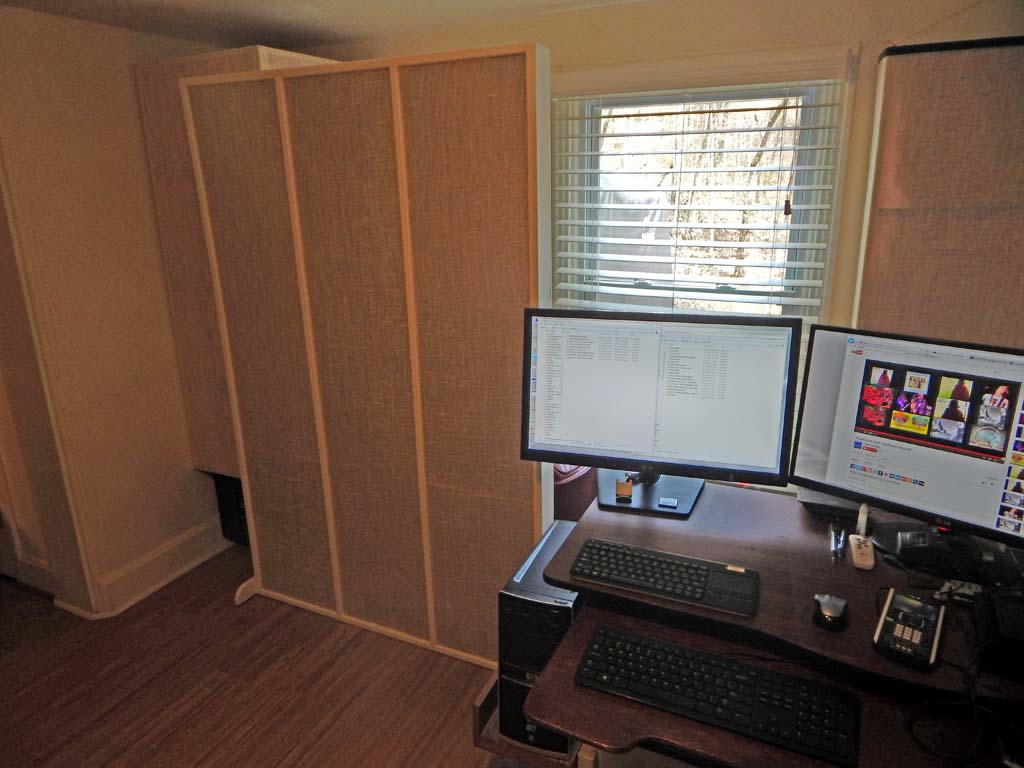
After remodeling the basement apartment in my old house, I decided to set up a new office in the basement apartment living room. I sorted through old gear from my old long-neglected free-standing home studio. Winnowing the legacy equipment down to essentials. Targeting an ergonomic, compact workspace for programming, keyboard playing, music listening, and possibly composing/recording should I ever regain interest in such.
In years past I was not entirely ignorant of acoustics but had not given much thought to acoustics. After setting up the basic equipment in this new space, I spent about six months studying acoustics, performing modest acoustic experiments, and building absorbers. Attempting to make this small room as good-sounding as possible-- As good as it will get while avoiding complete overkill-- Without spending excessive time and money on the project.
Possibly the project wandered slightly beyond the bounds of moderation but hopefully avoided crossing the border into full-blown obsessive compulsive disorder. Sometimes it is difficult to define “excessive”.
This has been a fun hobby, though acoustics is a deep topic and I remain woefully ignorant.
Having just remodeled this room, I did not want to build-in permanent acoustic treatments. I want to keep the room easily reversible to generic residential use. Using standalone absorbers, the room can be reverted into an ordinary small living room merely by removing the equipment and absorbers.
Acoustics is a non-intuitive field. I learned a bit via reading and “hands-on learning”. Perhaps if I had it to do over again, would use different treatments the next time around. However, the current configuration will have to do for awhile. I have declared it finished-- As good as its gonna get.
Here is a pictorial overview of the end result, circa January 2015. Starting at room left rear, panning around to room right-rear.
The acoustic treatment comprises about 25 home-made absorbers of various size, shape and function. The room is 15 feet wide, 11.5 feet front-to-back, with 6.7 foot ceiling height.


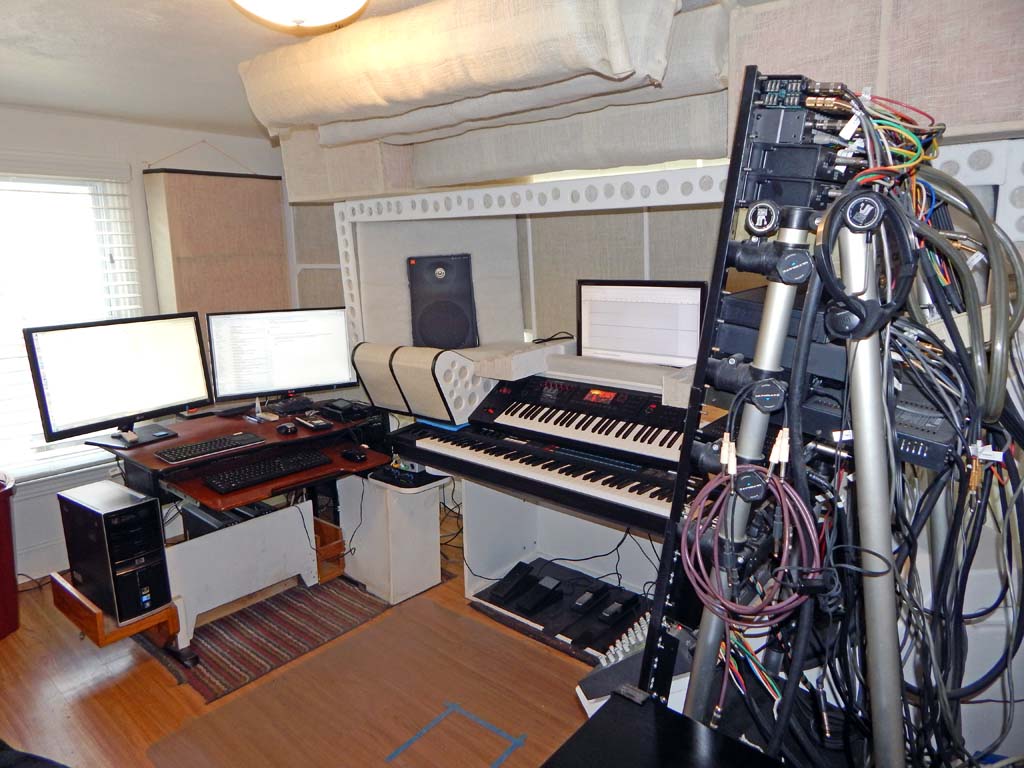
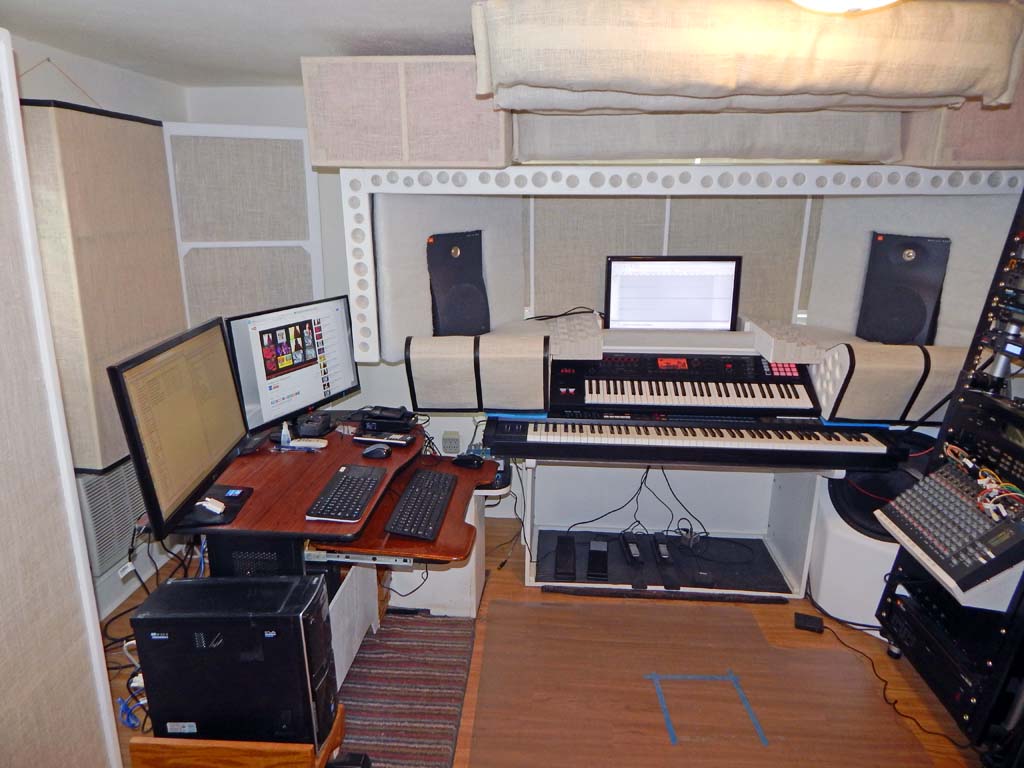

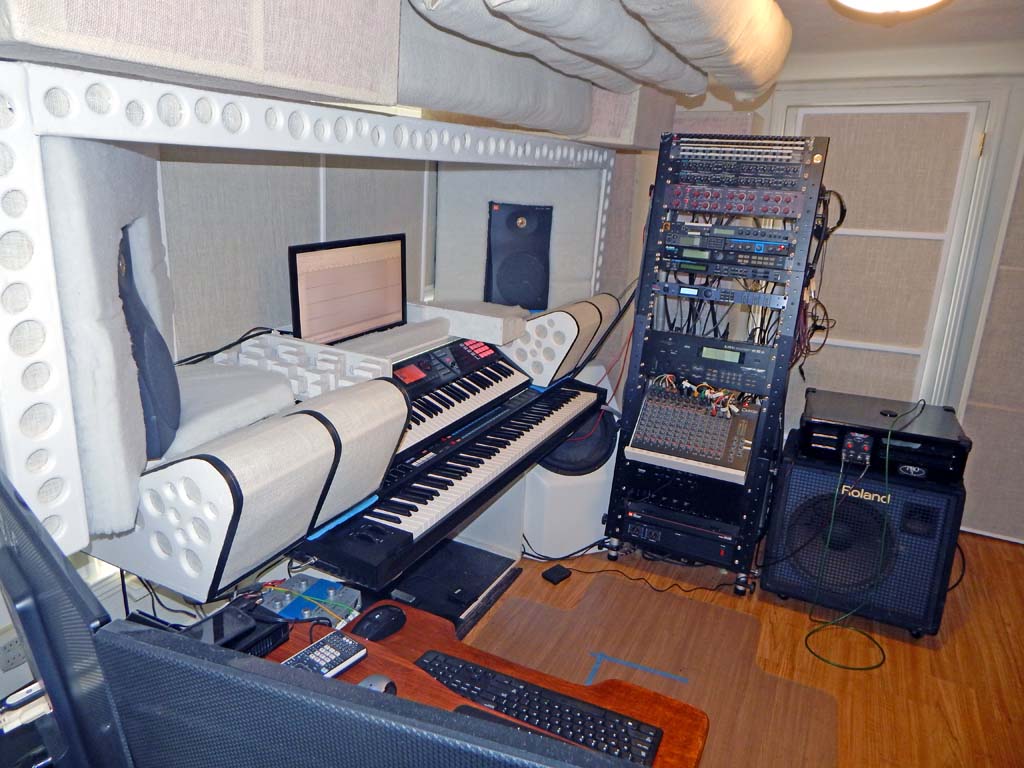
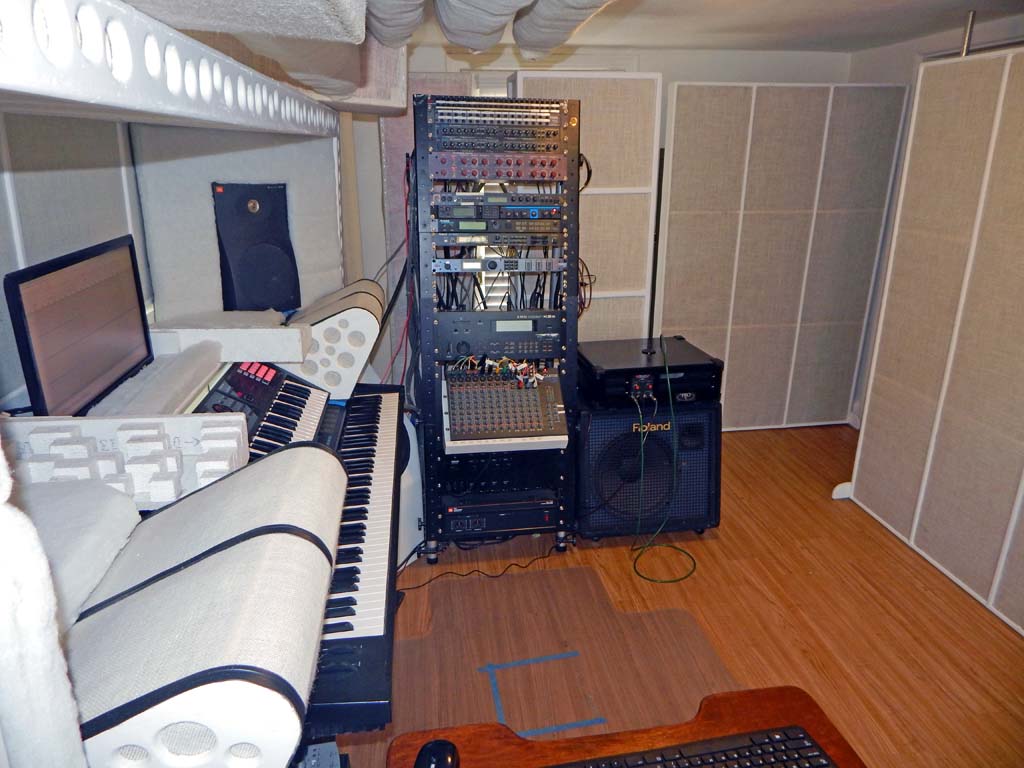
Room Measurements
Here is the room response at listening position, measured via the excellent Room EQ Wizard program. Conservatively equalized with the Parametric EQ and Auto-EQ features of a DBX Driverack.
The frequency response chart may at first impression appear wildly uneven, but note that the plot is 1 dB per division, making deviations easy to view. As calculated by my FRStatsCalc program--
Stats Frequency Range: 25.017 Hz to 17098 Hz
Mean SPL using 905 measurements = 90.933 dB
Max/Min Deviation (from Mean SPL) = +2.837 / -4.23 dB
Mean Absolute Deviation = 0.89943 dB
Median Absolute Deviation = 0.75202 dB
90th Percentile Absolute Deviation = 1.866 dB
99th Percentile Absolute Deviation = 2.767 dB

The waterfall plot has time duration of 1000 ms and vertical resolution of 60 dB. The 60 dB decay as viewed in the waterfall is about 200 ms in the highs, trending toward 400 ms down to 70 Hz. 60 dB decay extends toward 1000 ms in the low bass.
Low bass decay time in a small room is difficult to control. The bass decay time probably can't be reduced much further-- Except by removing equipment from the room to free up space for additional large absorbers. I have reached a limit to the number of additional absorbers which can be conveniently added to the room. No free space remains available for additional absorption.

The spectrogram tells about the same tale. Broadband frequency response and decay time is fairly consistent except in the low bass. This spectrogram has a dynamic range of 40 dB from red to blue, and time axis from -300 ms to +1000 ms.

I am ignorant about interpretation of ETC graphs, but here are 20 ms and 100 ms ETC graphs for whatever utility they may provide to interested experts. As best I can tell, it shows a fairly low level of early reflections, and no “haas kicker” late reflections, but I prefer a non-reflective “dead” listening space.
Two symmetrically placed always-open doorways lead from the rear of the room, which open into all the other rooms on the bottom floor of the house. Possibly providing useful bass sinking in the early time domain, but most likely allowing bass to bounce around in the other bottom-floor rooms and return at lower levels after a fairly long delay. This long-delay return is not audible at the listening position, though perhaps the effect is visible in the REW plots-- The fairly long low-level bass decay time.


I'm not unhappy with the room sound. Good mixes sound pretty good as far as I can tell.